Monday, 30th January 2023
Contesting the Hegemony of the Dollar – De-Dollarization
Exam View: Forex reserves, De-dollarisation, currency swaps, ASEAN countries, SWIFT international system, Steps need to be taken to counter the Dollar Hegemony, Effect of Policies & Politics of Countries on India's Interests.
In News: The multipolar international system is fast unfolding is reinforced by clear trends in polycentric global geoeconomics.
There is significant trade within the Global South; currency swap agreements; trade in national currencies bypassing the dollar; steps towards trading oil and gas in national currencies.
The promotion of above arrangements by regional organisations; the setting up of special accounts for internationalising national currencies; and the setting up of financial communications systems.

Challenges with the Dollarisation:
- Increasing dependence on US: Global trade is largely conducted in dollars, so countries that deal with the US a lot may become too dependent on the US economy.
- Manipulation of currency: The dominance of the dollar in global trade allows the US government to manipulate its currency to gain an economic advantage over other countries.
- Threats to the Economic Sovereignty: Many countries believe that their economic sovereignty is threatened by the dominance of the dollar in global trade, as it gives the US government a significant amount of control over the global economy.
- Risk of a Global Financial Crisis: The dominance of the dollar in global trade also increases the risk of a global financial crisis, as a crisis in the US economy can have a ripple effect on the global economy.
- Geo-Politics and check on US dominance: Some countries wish to reduce their dependence on the US dollar as it is seen as a way to reduce the US influence on their economy, and in some cases, as a form of resistance against the US dominance.

Way Forward
Despite speculation, there is no move towards de-dollarisation. The challenge for national currencies is that these are not fully convertible. Thus, despite the rise of alternate systems of trade, and multiple currency circulation systems, the dollar still dominates.
Dollar makes up 60% of the global currency, the euro 20%, the yen 5.8% and the yuan 3%. To make an alternate system operational requires a longer and sustainable effort. Trade and buying food and oil in national currencies gives countries outside the collective West options that were not available earlier.
In the contemporary international system, nation states of the Global South are determined to choose their own allies. In this environment geopolitics and geoeconomics are merging, and new supply chains and alternate currency chains are enabling dual/multiple circulation systems. This is the material basis of the multipolar system.
Need for rationalization of the list of national monuments
About the News:
- Economic Advisory Council (EAC) has recently released a report to the Prime Minister recommending rationalization of the list of monuments of national importance.
- Previously, Neemrana Baori in Rajasthan was the most recent addition to the list of monuments of national importance in India.
Major findings of the report:
- The council highlights the urgent need to rationalize the list and suggests that ASI evolve criteria and procedures for declaring monuments of national importance.
- The current list of 3,695 monuments of national importance has grown unwieldy and is filled with problems such as erroneous selections and skewed geographical distribution.
- The unchecked expansion of the list is due to the inadequate definition of "national importance" in the Ancient Monuments and Archaeological Sites and Remains (AMASR) Act, 1958.
- The council recommends that the government either amend the law or issue executive orders to fix the anomaly.
- Previously, nearly 2,584 monuments were moved from a colonial-era list and 736 were added between 1947 and 1958, resulting in the current list of 3,695 monuments of national importance.
Major issues highlighted in the report:
- The criteria for declaring a monument as a "monument of national importance" in India is currently not well defined.
- The list also includes several moveable artifacts like pieces of sculpture, statues, and cannons, which are treated as monuments.
- According to a 2013 audit by the Comptroller and Auditor General, there are 24 "untraceable" monuments still being considered as MNI.
- The bloated list results in inadequate funds for upkeep and maintenance, with a paltry sum of Rs 11 lakh per MNI in 2019-20.
- There is an imbalance in the state-wise distribution of funds, with Delhi receiving the lion's share.
- The revenue collected at MNI does not go to the ASI or the Ministry of Culture.
- The list of MNI has not been subjected to serious scrutiny and was en masse shifted from a colonial-era list and declared to be of national importance without review.
- The government also lacks a comprehensive database of the provenance, historical importance, geographical description, cultural, and architectural significance of all monuments.
- The Ancient Monuments and Archaeological Sites and Remains (AMASR) Act, 1958, which governs the list of monuments of national importance, does not provide a substantive process or criteria for identifying such monuments.
Recommendations:
- ASI should review and rationalize the existing list periodically and publish a book of notifications with detailed information about each monument.
- ASI should hand over the protection and upkeep of monuments of local importance to respective states and denotify standalone antiquities like cannons and statues.
- Standalone antiquities should be removed from the list and shifted to museums.
- Allocation of funds for preservation of MNI should be increased and ASI should retain revenue generated from tickets, events, fees, and other sources.
- Archaeological Survey of India (ASI) should evolve a comprehensive criteria and procedure for declaring monuments of national importance considering criteria such as:
- Historical significance and provenance
- Geographical description
- Cultural and architectural significance
- Importance in the development of civilization or culture
- Significance as a source of inspiration or education
List of important monuments of national importance:
- The ancient Neemrana Baori in Rajasthan's Alwar district;
- The Vishnu Temple in Pithoragarh district, Uttarakhand;
- Two Mughal-era monuments in Agra — Haveli of Agha Khan and Hathi Khana.
- High Court Building in Nagpur, Maharashtra,
- The Group of Temples at Ranipur Jharail in Odisha's Bolangir district;
- High Court Building Nagpur (also known as a “Poem in Stone” for its beautiful structure)
|
Archaeological Survey of India (ASI) |
|
https://timesofindia.indiatimes.com/india/monuments-of-national-importance-list-needs-rationalisation-economic-advisory-council/articleshow/97360231.cms
NEW STRIDES IN NEUROMORPHIC COMPUTING
In News
A team of scientists at Bengaluru’s Jawaharlal Nehru Centre for Advanced Scientific Research (JNCASR), an autonomous institute of the Department of Science and Technology, have used Scandium Nitride (ScN), a semiconductor material with supreme stability and Complementary Metal-Oxide-Semiconductor (CMOS) compatibility, to develop neuromorphic computing.
About the News
- Scientists have been trying to create an artificial synaptic device that does not suffer from RC delays (delay in signal speed through the circuit wiring), exhibits large bandwidth, consumes low energy, and is stable, scalable, and CMOS-compatible. The JNCASR team, which was working on nitride-based materials, has used their background to develop hardware for neuromorphic computing.
- They developed neuromorphic hardware using ScN. It is an artificial optoelectronic synapse with ScN thin films aimed at mimicking a biological synapse that controls the signal transmission as well as remembers the signal.
What is neuromorphic computing?
Neuromorphic computing is a method of computer engineering in which elements of a computer are modelled after systems in the human brain and nervous system. This can refer to both hardware and software computing elements.
- It involves the use of Artificial Neural Networks (ANN) made up of millions of artificial neurons.
- These neurons pass signals to each other in layers, converting input into output through electric spikes based on the architecture of Spiking Neural Networks (SNN).

What is a biological Synapse?
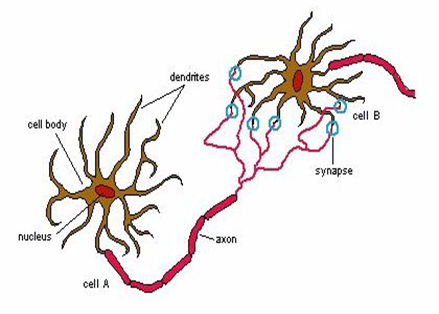 Synapse, simply put, is the point of contact or junction between two neurons (or nerve cells) where information or electric nerve impulses are passed from one neuron to the next.
Synapse, simply put, is the point of contact or junction between two neurons (or nerve cells) where information or electric nerve impulses are passed from one neuron to the next.
- A human brain is like a supreme biological computer that is smaller and more efficient as compared to traditional computers due to the presence of synapse.
- Synapse plays the role of both processor and memory storage unit, unlike in traditional computers where the memory storage and processing units are separate.
How can this ScN based optoelectronic synapse revolutionise Neuromorphic Computing?
The institute’s work, unlike previous works on all-electronic synapse, shows –
- Varying synaptic strength:
- With varying concentrations of Magnesium (Mg) doping, increase and decrease in synaptic strength can occur in the same material. This wasn’t possible before.
- It is an optoelectronic synapse:
- The increase in resistivity in ScN and decrease in resistivity in Mg-doped ScN on shining light was used as the excitatory (increase in current/synaptic strength) and inhibitory (decrease in current/synaptic strength) nature of the synapse, respectively.
- Response to the optical stimuli also has the advantage of possible integration with photonic circuits known for higher speed and broader bandwidth than electronic circuits.
- It can mimic synaptic functionalities of memory:
- Short-term memory
- Long-term memory
- Transition from short-term to long-term memory
- Learning-forgetting
- Hebbian learning
- Logic-gate operations
- It has a large bandwidth and reduced RC delays.
- It has low power consumption and is more stable than previous electronic synapse works.
- It can be seamlessly integrated with existing Si technology.
- It is a CMOS chip-compatible group-III nitride semiconductor and is scalable.
Source:
https://pib.gov.in/PressReleaseIframePage.aspx?PRID=1893580#:~:text=Artificial%20synapse%20developed%20for%20brain,with%20industry%2Dcompatible%20Nitride%20Semiconductors&text=Scientists%20have%20used%20scandium%20nitride,to%20develop%20brain%2Dlike%20computing
BATTERY ENERGY STORAGE SYSTEM - Edukemy Current Affairs
In News
A study by a United States-based think tank, Institute for Energy Economics and Financial Analysis (IEEFA), projected exponential growth in India’s Battery Energy Storage System (BESS).
About the News
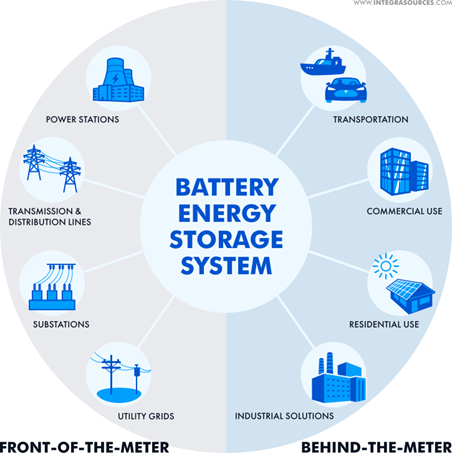
The study identified seven upcoming battery storage projects in the country.
- These storage projects have been awarded to JSW Energy, Greenko Energy, NTPC Renewable Energy Ltd, Tata Power etc.
- There are three standalone battery storage projects.
- Some are hybrid projects as well which are storage assets attached to solar and wind operations combined.
- International Energy Agency’s India Energy Outlook 2021 also projected that India could potentially have 140-200 GW battery storage capacity, largest in the world, by 2040.
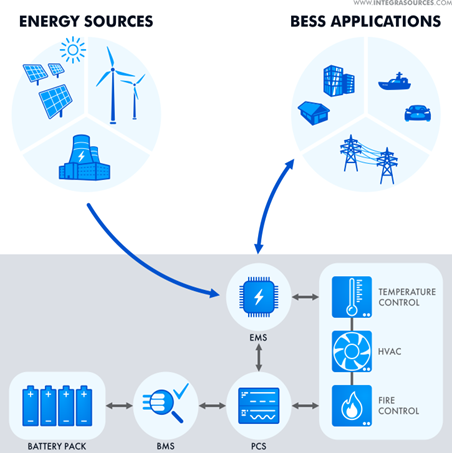 How is BESS one of the key emerging technologies in the Indian renewable energy sector?
How is BESS one of the key emerging technologies in the Indian renewable energy sector?
- It can store excess solar and supply power, when the grid demand is low.
- It can ensure peak-time power supply, which is currently being done by coal-fired power plants.
- It can ensure round-the-clock power to help overcome the intermittent nature of renewable energy.
- The three standalone battery storage projects can be used according to the requirements of distribution companies.
- It can provide faster responses for balancing the grid power supply at 50 hertz, than coal-fired power plants. Right now, the grid is balanced through coal-fired power plants, which either ramp up or ramp down electricity generation based on un-requisitioned capacity.
- It is important if India has to depend more on renewable energy. India’s draft national electricity plan, 2022 highlighted this. The plan made projections of 51.5GW of BESS installations by 2031-32.
What are some policies that support BESS in India?
- The Ministry of Power (MoP), in 2021, ordered a waiver of interstate transmissions system charges for battery storage commissioned until June 2025, to ensure seamless power supply across states.
- MoP notified bidding guidelines for the procurement and utilisation of BESS in 2022.
- MoP’s trajectory of Renewable Purchase Obligations (RPO) till 2029-2030, for the first time, included energy storage obligations trajectories till 2029-30.
- The Production Linked Incentive scheme offers incentives for creating a localised value chain for the battery industry. This includes financial allocations for Advanced Chemistry Cell (ACC) batteries under the National Programme on ACC Battery Storage.
What are the steps needed to be taken to encourage BESS further?
- Time of day pricing (ToD) pricing:
- ToD structure is one where the cost of electricity depends on the time of the day. This pricing structure will help scale up BESS investment by consumers and businesses during peak hours when Electricity prices increase.
- Critical technologies in manufacturing Lithium-ion batteries:
- Lithium-ion is a dominant form of BESS chemistry. India lacks access to critical technologies used in its manufacturing. Hence industry players may also look at setting up capacity for alternative chemistries such as those based on sodium.
- Growth of a fully developed value chain for batteries:
- Despite projections by clean energy research provider BloombergNEF, of reduction in the cost of Lithium-ion batteries from $151/kWh in 2022 to $59/kWh by 2030, the absence of a fully developed value chain for batteries in India, could lead to a slightly flatter cost deflation curve compared to already developed markets in the US, Europe, Australia and China.
- Improve the feasibility of BESS:
- With multiple value-stacking opportunities which is a combination of all services like arbitrage or ancillary services.
Source:
https://www.downtoearth.org.in/news/renewable-energy/ieefa-projects-exponential-growth-of-battery-storage-assets-in-india-87343#:~:text=International%20Energy%20Agency's%20India%20Energy,for%20any%20country%2C%20by%202040.
SUPREME COURT EASES NORMS FOR PASSIVE EUTHANASIA
In news
- The Supreme Court of India recently eased the guidelines for passive euthanasia.

About
- The act of withholding or withdrawing medical care, such as withholding or removing life support, with the aim of letting a person die, is known as passive euthanasia.
- Active euthanasia, in contrast, entails an active intervention to end a person's life with drugs or an outside force, like giving a deadly injection.
Euthanasia in India:
- The Supreme Court of India legalised passive euthanasia in 2018 in a landmark decision, using the concept of a "living will."
- Instead of the hospital and Collector forming the two medical boards, both boards will now be formed by the hospital.
- The requirement of 20 years of experience for the doctors has been relaxed to five years.
- The requirement for the Magistrate’s approval has been replaced by an intimation to the Magistrate.
- The medical board must communicate its decision within 48 hours; the earlier guidelines specified no time limit.
- The 2018 guidelines required two witnesses and a signature by the Magistrate; now a notary or gazetted officer can sign the living will in the presence of two witnesses instead of the Magistrate’s countersign.
- In case the medical boards set up by the hospital refuses permission, it will now be open to the kin to approach the High Court which will form a fresh medical team.
- Also read: Article 21 of the Indian constitution
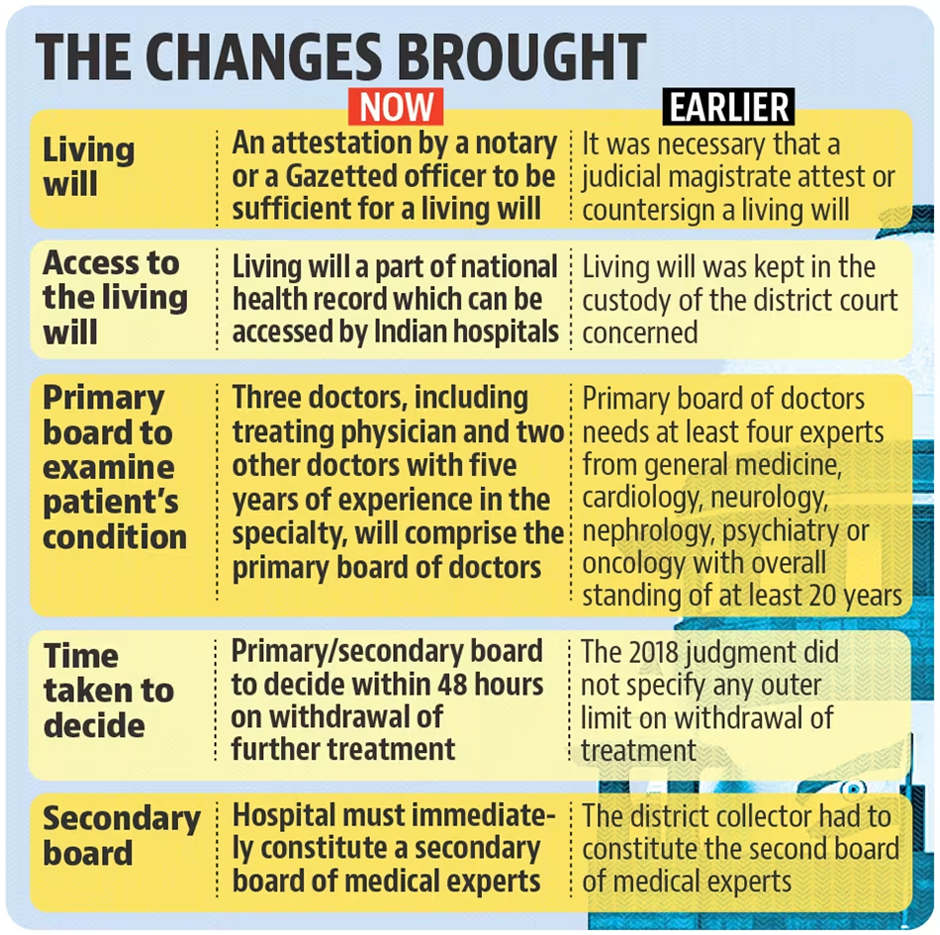
https://indianexpress.com/article/explained/explained-law/passive-euthanasia-india-laws-supreme-court-changes-in-living-will-guidelines-8404919/
RBI RELEASES DISCUSSION PAPER ON SSAF
In News:
- The Reserve Bank of India has introduced a Securitization Framework to speed up and simplify the sale of distressed assets.

About
- Stressed Assets include non-performing assets, assets that have been written off, and restructured loans. In other words, these assets do not generate a profit. Stressed asset sales are extremely difficult.
- The SARFESI Act typically allows for the sale of defaulted loans. The RBI now suggests a distinct entity method for selling bad loans under the Stressed Assets Securitization Framework.
- The stressed assets will be managed by a serving entity chosen by this special entity. They will work with a fee schedule. The payment is a reward for their diligence. They will perform better and recover more quickly as a result.
https://www.livemint.com/news/india/rbi-releases-discussion-paper-on-securitisation-of-stressed-assets-framework-11674664591376.html
CIL TO LAUNCH M-SAND PROJECTS - Edukemy Current Affairs
In news
- Recently Coal India Ltd. launched M-Sand Project.
About:
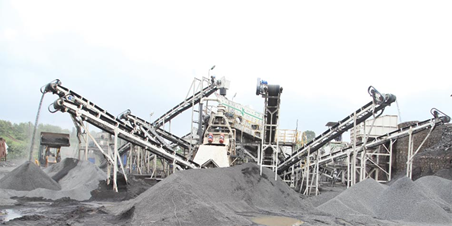 Sand Mining Framework (2018) prepared by Ministry of Mines envisages alternative sources of sand in the form of Manufactured Sand (M-Sand) from crushed rock fines (crusher dust), sand from Overburden (OB) of coal mines.
Sand Mining Framework (2018) prepared by Ministry of Mines envisages alternative sources of sand in the form of Manufactured Sand (M-Sand) from crushed rock fines (crusher dust), sand from Overburden (OB) of coal mines.
OB to M-Sand initiative of CIL is facilitating processing of waste overburden in its OC Mines. Manufactured Sand (M-Sand) from overburden of coal mines have several benefits in terms of economy and environmental sustainability, including:
- Cost-effectiveness: Using manufactured sand can be more cost-effective than using natural sand, as it can be produced in large quantities at a lower cost.
- Consistency: Manufactured sand can have a consistent grain size and shape, which can be beneficial for construction projects that require a specific type of sand.
- Environmental benefits: Using manufactured sand can help to reduce the need for mining natural sand, which can have negative environmental impacts. Additionally, using the overburden from coal mines can help to repurpose materials that would otherwise be considered waste.
- Reduced water consumption: Using manufactured sand can help to reduce the amount of water required for construction projects, as it does not require washing before use.
- Better workability: Manufactured sand is more angular and has a rougher surface, which makes it more workable for construction projects.
- Land occupied by OB dumps can be freed for alternative useful purposes
- Recovery of sand from waste overburden is the best out of waste product
- Commercial sale of produced sand can generate additional revenue for coal companies
- Apart from commercial use, sand produced shall also be consumed for sand stowing in Underground Mines enhancing safety & conservation
- Lesser Sand extraction from river will reduce erosion of channel bed & banks and protect water habitat
- Help maintaining water table
https://pib.gov.in/PressReleasePage.aspx?PRID=1894047
Short Selling - Edukemy Current Affairs
Why in news? Short seller Hindenburg Research disclosed short positions in Adani Group, alleging stock manipulation and accounting fraud in its latest investigative report.
About:

- It is a trading strategy based on the expectation that the price of the security will fall.
- It is an investment or trading strategy that speculates on the decline in a stock or other security’s price.
- It occurs when an investor borrows a security and sells it on the open market, planning to buy it back later for less money.
- Short sellers bet on, and profit from, a drop in a security’s price.
- Short selling has a high risk/reward ratio: It can offer big profits, but losses can mount quickly and infinitely due to margin calls.
https://www.thehindu.com/business/Industry/hindenburg-research-with-an-eye-for-fraud/article66444460.ece
Similipal National Park Becomes Hunting Ground
Why in news? Similipal witnessed 11 elephant deaths since 2019 including four in 2021-22, according to the data by the forest and environment department of the eastern state.

About:
- It is located in northern part of Odisha’s Mayurbhanj district.
- Similipal derives its name from ‘Simul’ (Silk Cotton) tree.
- It is a national park and a Tiger Reserve.
- It has been part of the UNESCO World Network of Biosphere Reserves since 2009.
- The park includes three protected areas of Similipal Tiger Reserve, Hadagarh Wildlife sanctuary and Kuldiha wildlife sanctuary.
- The park has vegetation ranging from tropical semi-evergreen forests, tropical moist deciduous forests, dry deciduous hill forests, high-level sal forests and sprawling meadows.
- Two tribes, the Erenga Kharias and the Mankirdias inhabit the reserve’s forests and practice traditional agricultural activities. Other dominant tribes in the region include the Ho, Gonda and Munda, among others.
https://www.downtoearth.org.in/news/wildlife-biodiversity/similipal-national-park-a-poacher-s-paradise-experts-note-a-rise-in-incidents-87336
Biologicals - Edukemy Current Affairs
Why in news? Ministry of Health and Family Welfare inaugurated National Summit on Quality of Biologicals.
About:
- Biologicals are those classes of medicines which are produced through biotechnology in a living system such as microorganism, plant cell, or animal cells.
- These include vaccines, growth factors, immune modulators, monoclonal antibodies, as well as products derived from human blood and plasma.
- Biologicals are generally proteins purified from living culture systems or from blood, whereas other medicines are considered as ‘small molecules’ and are either made synthetically or purified from plants.
https://newsonair.com/2023/01/27/health-minister-mansukh-mandaviya-inaugurates-national-summit-on-quality-of-biologicals/
World Economic Situation and Prospects 2023 report
Why in news? UN predicts India growth to moderate to 5.8% in 2023.
About:
- It is produced by United Nations Department of Economic and Social Affairs (UN-DESA), in partnership with UN Conference on Trade and Development and five UN regional economic commissions.

Key highlights
- COVID-19 pandemic and war in Ukraine battered world economy in 2022.
- World output growth is projected to decelerate from an estimated 0 percent in 2022 to 1.9 percent in 2023.
Recommendations
- Strengthening social protection systems.
- Strategic public investments in education, health, digital infrastructure etc.
- Reallocation and reprioritization of public expenditures.
https://economictimes.indiatimes.com/news/economy/indicators/gdp-growth-may-slip-to-5-8-in-2023-un/articleshow/97326652.cms
Genetically Engineered Trees - Edukemy Current Affairs
Why in news? As the US mulls over releasing genetically engineered trees in the wild, experts warn of its possible environmental impact.
About:
- A genetically modified tree (GMt, GM tree, genetically engineered tree, GE tree or transgenic tree) is a tree whose DNA has been modified using genetic engineering techniques. It can help in fighting climate change by sequestering more carbon; boost biofuel production; help in growing more timber, pulp etc.
- It may also mean extracting DNA from another organism’s genome and combining it with the DNA of that individual.

Issues with GE trees:
- GE Trees may contaminate other trees along with animals; also not many scientific studies done on the long-term impact of GE trees
https://www.downtoearth.org.in/news/environment/a-wild-thought-are-genetically-engineered-trees-really-the-future--87154
Lagrange points - Edukemy Current Affairs
Why in news? Recently, the Indian Institute of Astrophysics, Bengaluru handed over the primary payload of the country’s first mission to sun to the Indian Space Research Organisation (ISRO).
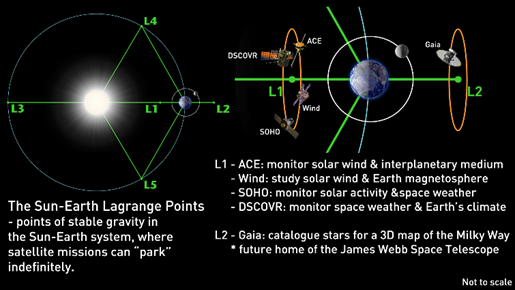
About:
- Lagrange points are positions in space where objects sent there tend to stay put.
- Lagrange point is a point where the Earth's and Sun's gravitational forces are balanced.
- At Lagrange points, the gravitational pull of two large masses precisely equals the centripetal force required for a small object to move with them.
- These points in space can be used by spacecraft to reduce fuel consumption needed to remain in position.
- Of the five Lagrange points, three are unstable and two are stable.
https://indianexpress.com/article/india/aditya-l1-iia-countrys-first-mission-to-sun-isro-3d-model-of-the-payload-8406772/
Share the article
Get Latest Updates on Offers, Event dates, and free Mentorship sessions.

Get in touch with our Expert Academic Counsellors 👋
FAQs
UPSC Daily Current Affairs focuses on learning current events on a daily basis. An aspirant needs to study regular and updated information about current events, news, and relevant topics that are important for UPSC aspirants. It covers national and international affairs, government policies, socio-economic issues, science and technology advancements, and more.
UPSC Daily Current Affairs provides aspirants with a concise and comprehensive overview of the latest happenings and developments across various fields. It helps aspirants stay updated with current affairs and provides them with valuable insights and analysis, which are essential for answering questions in the UPSC examinations. It enhances their knowledge, analytical skills, and ability to connect current affairs with the UPSC syllabus.
UPSC Daily Current Affairs covers a wide range of topics, including politics, economics, science and technology, environment, social issues, governance, international relations, and more. It offers news summaries, in-depth analyses, editorials, opinion pieces, and relevant study materials. It also provides practice questions and quizzes to help aspirants test their understanding of current affairs.
Edukemy's UPSC Daily Current Affairs can be accessed through:
- UPSC Daily Current Affairs can be accessed through Current Affairs tab at the top of the Main Page of Edukemy.
- Edukemy Mobile app: The Daily Current Affairs can also be access through Edukemy Mobile App.
- Social media: Follow Edukemy’s official social media accounts or pages that provide UPSC Daily Current Affairs updates, including Facebook, Twitter, or Telegram channels.





